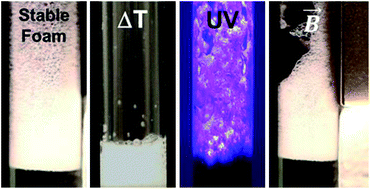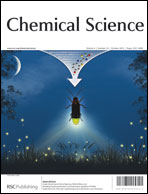Foams that respond to external stimuli are a new type of highly functional soft matter and an emerging research subject in the field of materials and colloid science. Herein, we report a new way to control foam stability using light irradiation. This unconventional approach involves a combination of the thermal response of a fatty acid and the ability of carbon black to convert light stimulus to heat. This simple system features both high foamability and high foam stability, but can easily be destroyed by light. Upon exposure to UV or solar illumination, the carbon black particles absorb light causing an increase in temperature inside the foam lamella. This results in a transition of the fatty acid assemblies from tubes, which stabilize the foam films, to micelles, leading to rapid foam destabilization. The foam destabilization rate under UV irradiation was correlated to foam liquid fraction, fatty acid concentration, as well as carbon black concentration. Our approach for the formulation of photo-thermo-responsive foams could be easily generalized and extended to magnetic particles, giving rise to the first foams exhibiting thermo-photo-magneto-tuneable stability. Such multi-stimuli responsive systems can find applications in diverse industries requiring highly stable systems which can be destroyed on-demand.

You have access to this article
 Please wait while we load your content...
Something went wrong. Try again?
Please wait while we load your content...
Something went wrong. Try again?


 Please wait while we load your content...
Please wait while we load your content...